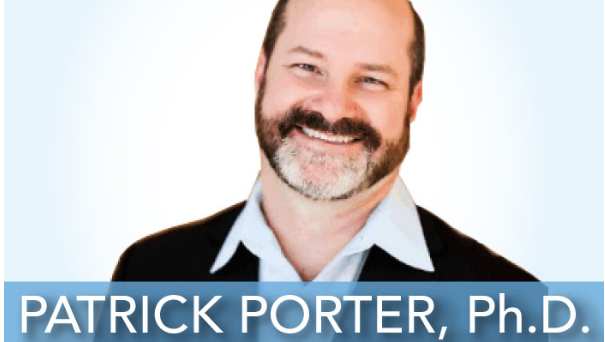Easy Way To Disrupt Negative Thinking

Kathy Smith: Tell me. How difficult is it to change a habit?
Patrick Porter: Well, it’s very difficult because the brain creates what we call brain circuits and those circuits are wired and fired. So, like you said with your routine, if you follow that routine, it’s almost like you lost a loved one. Your neurology doesn’t know what to do, so you have this longing or this missing that happens at the cellular level because those neurons that have been wiring and firing together are no longer connecting. So, we need a way to disrupt the pattern and put a new program in.
Kathy Smith: Give me an example. We want to disrupt a pattern.
Patrick Porter: Most of the time, what happens is when somebody does without and let’s say they want to change their routine to do something like you’re doing, but they’re used to getting up, going down, making their coffee, sitting and maybe having a cigarette or whatever. What happens is that’s the pattern. So, we stop that. They need to get up, maybe shake their physiology a little bit, roll their shoulders back, take a few deep breaths, set their position just like a good athlete would right before a play. Whether it be tennis or golf or whatever, they always get into that stance. They get their mind right first, then you start to think about it. I have an expression that I use. You get what you rehearse in life, not what you intend.
So, you can pre-rehearse it, which is what you do when you do your meditation. You’re kind of reviewing your day probably without knowing it. Or maybe you do know it on a conscious level. The reality is most people never plan their day and, then, at the end of the day, they wonder why their plan didn’t work, because they didn’t really do it in their mind first. So, the mind doesn’t know the difference between real or imagined, Kathy. And if they don’t start to imagine what they want, they’re going to get what they’ve always got.
Kathy Smith: It sounds to me like you’re saying the golden rule of changing a habit is to start rehearsing in your mind what you want to happen.
Patrick Porter: Yes, and change your physiology at the same time. You have to somehow shift, because your physiology affects your psychology. That’s why exercise is so important in changing moods. If you stay in the same old physiology, you’re going to really stay into the same old thought pattern. So, we want to break up the physiology, get the brain wiring and firing differently and, then, put new thoughts in, new ideas.
Kathy Smith: I totally know what you’re talking about. If I’m sitting for a period of time and I feel myself hunching over, drooping a little bit, it really has an impact on my mental outlook. So, all I have to do is sit up straight, roll those shoulders back, do a few shoulder rolls and take a few deep breaths and all of a sudden, I’ve got my energy back. So, that’s what you’re talking about changing your physiology. Do something. I know sometimes I use breath, sometimes I use an explosive word. I won’t do it right now because I’ll blow up the microphone, but you’ll go, “Whoa,” or “Yah,” or something that just gets you up and changes your state. That change in the state as well as rehearsing what you’re going to do next helps you retrain the brain, so to say.
Patrick Porter: Yeah. We have a technique similar to that that we teach. I’ve been teaching clients for years. We have them say, “Stop.” Then, we say stop thinking of past patterns and habits and begin to think of three new options. Their goal is to start thinking of three things they could do differently in that moment. Now, if they can’t think up three things, they have to think of three ridiculous things. Because the brain likes what we call compulsion blowouts. It likes to do things that are outside of the norm, but we personally don’t feel comfortable doing that. So, we’ve got to make it a game. The more we can make change, the more our brain will adapt and create those beneficial neuronetworks that we want.
Kathy Smith: So, the point is get outrageous. Get a little outrageous as you go through the change process.





